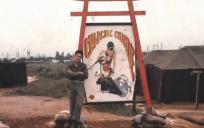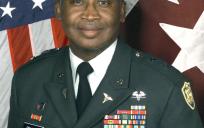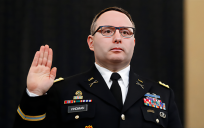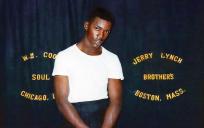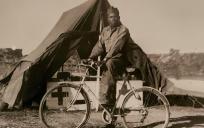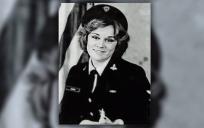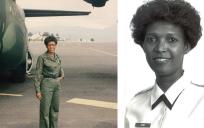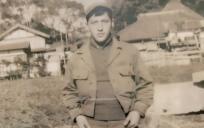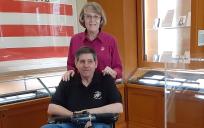Record date:
Michael Grounds Transcript.pdf
Michael, Grounds, Staff Sergeant, US Army
As long as cold beer and hot food could be flown in by helicopter, tanker Michael Grounds kept his cool head. He was undeterred by dangerous missions, jungles, and heat in the Vietnam War. Fellow “tanker,” Major (Retired) Steven Fixler conducts this conversation.
Grounds grew up in Elwood Park, near Chicago in the 1950s and sixties. Although he started his studies at Triton Junior College, he chose to be inducted into the US Army on Feb. 13, 1968. After boot camp at Fort Leonard Wood, Missouri, he trained as an infantryman at Fort Polk, Louisiana. ‘Tiger Land,’ a simulated Vietnamese village, and the intense humidity proved to be part of the preparation. Right after that, he was “converted” into a tanker, 11 Echo, learning different roles of a crew on M60-A1 tanks, at Fort Hood, Texas.
After he arrived in Vietnam, in 1968, Grounds was assigned to the 25 Infantry Division’s, 2nd Battalion, 34th Armor Regiment, B Company. It was put under the operational control of the 1st Infantry Division. After initial assignments driving vehicles, he was pleased to be back with tanks, first as a gunner for the 3rd Platoon of B Company and later as a tank commander. Their base camp, Lai Khê, was at the north end of Highway 13 and they mainly operated in Tactical Zone III, north of the Iron Triangle. Grounds was assigned to an M4883 tank, instead of an M60 that he used during training. He appreciated the M48’s excellent engine, transmission, and steel road wheels which could take the abuse of hard-packed laterite roads. He and his crews were mechanically adept. Once three tanks went belly up in the muddy center of what appeared to be a dried-up rice paddy and they had extracted them with tow cables. Similarly, his crew improved upon the vehicles. The gunner sheet was removed and replaced by sandbags upon which ammunition was placed. Or they cut down the M2 tripod from its initial location and welded it on the cupola which made it more accessible and allowed the 100-round box of ammo to be used rather than the 90-round.
One typical mission, done at a platoon level, was that of convoy escort, such as from Lai Khê to firebase Thunder III and back. They were often accompanied by gun jeeps and the mechanized infantry who would pick up the convoy down the road. They could also call for air cover if needed. If they faced fire, their strategy was to “crash through the ambush zone” returning fire. They were also charged with protecting the land clearing companies, LCCs usually comprised of twenty-five Rome Plows with special blades to cut down the jungle and would do perimeter security for them at night on firebases.
Thunder Runs, usually from Lai Khêto Firebase Thunder I, where two tanks would speed through at night intended to prevent the enemy from using the road was another mission. A typical daytime one was Road Outpost where tanks would sit at the sides of the road to prevent possible enemy ambushes of US conveys. He did much of this, as well, on Highway 19 to Pleiku on his second tour. With North Vietnamese soldiers operating in the Michelin Rubber Plantation, Grounds’ crew was also sent on Search and Destroy missions there. It was difficult to maneuver tanks in the thickly planted plantations. Another tactic used was “Mad Minutes” – Everybody in all the vehicles in the perimeter would open fire at a specified time by the TAC (tactical officer) controller and then would cease fire after about a minute aimed to confuse the enemy.
Lai Khe, the headquarters of the 3rd Brigade was the most comfortable of their range of locations. It was “home” when they returned from convoy support missions. They slept in wooden barracks, stored their belongings in footlockers, and ate meals at the mess hall, and did heavy tank maintenance there. He also spent time in Thunder I, II, & III which Grounds considers semi-permanent artillery bases. On “real” firebases, he recalls putting chain link fences on metal stakes, surrounding the firebase or “RPG screens” so that an incoming RPG would detonate there before hitting the tanks inside. Regardless of the exact location, dust prevailed so cleaning their weapons as well as the tanks’ air filters regularly was a must.
When they were out in the field, helicopters such as Chinooks re-supplied everything from food to ammunition to fuel, the latter was used up quickly due to jungle busting:
“…you had the blivet [containers of fuel] up in the air. Just gravity feeding into the tank…”
Grounds was also grateful for the delivery of hot food in marmite cans and cold beer, known as pretzels. The helicopter would stay on the ground for not more than a minute in total.
Grounds shares his impression of the enemy, noting that the North Vietnamese Army where well-equipped while the Viet Cong made many of their weapons such as punji pits, sticks intended to stab and infect enemy soldiers’ feet. At the end of December 1968, Grounds’s returned to the US and mustered out at Fort Hood. Although he started a job and community college, in May 1970, he enlisted again, expecting to be based om Fort Knox, Kentucky. Instead, he was immediately shipped to Augsburg, Germany and after a bit, assigned to the 63rd Armor of the 1st Division with whom he trained for about eight months. It was there where he had made the rank of buck sergeant. Unlike Vietnam, he encountered low morale and discipline problems among the troops.
He was sent to Vietnam and assigned to the 10th Armored Cavalry whose main mission was to keep Highway 19 open to Pleiku in the Central Highlands. With the lessening of US forces in Vietnam, the 10th Cavalry was pulled out, so Grounds was reassigned to the 11th Armor Cavalry, 2nd squadron, G troop. Since there were no M48s left, he was made a track commander on an ACAV, an armored cavalry assault vehicle. The missions were similar to those of his first tour and were even in the same area. He even encountered his former platoon’s M48A3 tank that was burned out and rusting. Since the enemy saw that the US was withdrawing, they did not face any “action.” He left in March 1972. On neither return to the States did he experience hostility on the part of civilians. After his leave, he was sent back to Fort Hood where he was made E6, tank commander yet he decided to separate from the Army in June 1973.
Grounds worked in purchasing at International Harvester and at other companies. He continued his college studies on a part-time basis. He now enjoys his retirement. For many years, he has participated in veteran communities and is especially fond of 2/34 reunions which he attends with his wife, Rosie.
